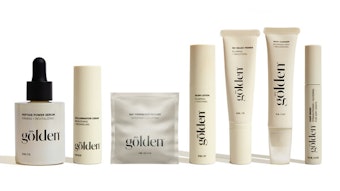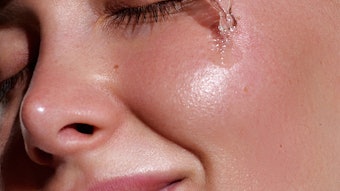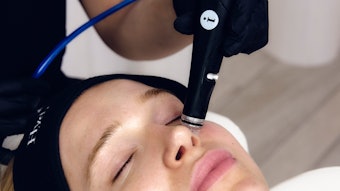
The vaginal area has been a taboo subject for decades. Although women globally experience types of discomfort that disturb their daily lives, topics like yeast infections, infertility, intimate personal care and reproductive health are still unmentionable and mostly only talked about behind closed doors or at gynecologists’ offices. However, there is growing interest in female health, including the vaginal area; the March 2023 edition of Vogue even featured an article demystifying the vaginal microbiome (VMB).1
Log in to view the full article
The vaginal area has been a taboo subject for decades. Although women globally experience types of discomfort that disturb their daily lives, topics like yeast infections, infertility, intimate personal care and reproductive health are still unmentionable and mostly only talked about behind closed doors or at gynecologists’ offices. However, there is growing interest in female health, including the vaginal area; the March 2023 edition of Vogue even featured an article demystifying the vaginal microbiome (VMB).1
The vagina is a dynamic ecosystem, with microbiota comprising more than 200 bacterial species2 influenced by genes, ethnic background and environmental-behavioral factors. The VMB is highly unique and differs greatly from the other microbiomes of the body. Its diversity is relatively low, which is key for a balanced and healthy VMB. This contrasts the fact that microbial diversity is a marker for health in other microbiomes such as the gut; diversity is actually a potential factor for dysbiosis in the VMB.
In every woman, the VMB is dominated by one of five microbial communities — so-called Community State Types (CSTs), each of which is characterized by the dominance of specific bacterial species or groups. The most well-known CSTs are:
I. Lactobacillus crispatus;
II. Lactobacillus gasseri;
III. Lactobacillus iners;
IV. Devoid of Lactobacillus; and
V. Lactobacillus jensenii.
These CSTs are not definitive, however, as they are under discussion with ongoing research.
To defend the vaginal environment against pathogenic invaders, the vaginal pH level is a very acidic 3.8 to 4.5. This is mostly the result of lactic acid production through fermentation by lactobacilli. The strongest lactic-acid producer is L. crispatus, which dominates CST I. Type CST I is correlated with vaginal health and fertility as it is prevalent in healthy and pregnant women.
Besides lactic acid, antimicrobial peptides called bacteriocins are produced by lactobacilli. Bacteriocins directly inhibit pathogens such as Gardnerella vaginalis, Neisseria gonorrhoeae3 and Chlamydia trachomatis.4
While L. iners is one of the most observed vaginal species, women with high levels of this microbe can be either bacterial vaginosis (BV) positive or negative.5 The dominance of L. iners is also correlated to lower amounts of lactic acid, which explains the prevalence of BV in these women.6
Stunning differences between ethnicities have been detected. Black and Latina women are more likely to have low levels of lactobacilli,7 yet a higher BV prevalence (> 30%) than white (23%) or Asian (11%) women.8 Further investigation is needed to explain this phenomenon.
Although lactobacilli are not an absolute requirement for a healthy VMB, 70% of healthy women show a Lactobacillus-based microbiota. Several studies have revealed that L. crispatus-dominated VMBs are less prone to transition into a dysbiotic state and BV. They also have the lowest prevalence of HIV, herpes simplex virus type 2 (HSV-2) and human papillomavirus (HPV).9
BV is characterized by a reduced abundance of lactobacilli and overgrowth of bacteria such as G. vaginalis, Atobium spp., Prevotella spp. and other taxa. The overgrowth of these bacteria form a biofilm on the vaginal epithelial surface, which is initiated by G. vaginalis.
In childhood, the VMB mainly consists of anaerobic microbiota and a mix of skin and gut microbes. With the rise of estrogen levels during puberty and the preparation for potential pregnancy, glycogen is accumulated in the vaginal epithelium. This aids in the growth of microorganisms like lactobacilli that metabolize glycogen to glucose and then ferment it to lactic acid.
With lower estrogen levels in (post-) menopausal women, glycogen is less available, decreasing the number of lactobacilli. This can result in lowered protection against pathogenic organisms. In contrast, during pregnancy, estrogen levels increase, with more lactobacilli as a result.
In pregnant women, L. crispatus appears to be the most dominant species.10 However, a higher abundance of glycogen explains the phenomenon of persisting yeast infections during pregnancy, as it is a nutrient for C. albicans.11
Not only does the microbiome change during a woman’s lifespan, but also during the monthly cycle. Aligned with estrogen release, particularly in healthy women, it has been found that Lactobacillus spp. predominantly increase while Prevotella sp. decrease from day 1 to day 24 of the menstrual cycle.12
The vaginal microbiome affects fertility, a healthy pregnancy and receptivity to sexually transmitted diseases (STD) that can be caused by more than 30 bacterial, viral and parasitic pathogens such as C. trachomatis, N. gonorrhoea, HIV, HSV-2 and HPV. STDs can be transmitted via vaginal, anal and oral sex.13
Changes During Pregnancy
The pH of the vagina influences receptivity to sperm and promotes a healthy environment for sperm to survive for a period of time. The pH in the vagina is also important for a healthy pregnancy, preventing pre-term birth.14, 15
The VMB in pregnancy is characterized by a decline in microbial diversity and plays a role in embryonal implantation. Low amounts of lactobacilli can lead to implantation failure, pre-term labor, and miscarriages. It also has been found that increased levels of L. iners are a risk factor for preterm birth,14 which affected one in ten infants in the USA in 2018 (CDC).15
The microbiome strongly influences reproduction and the healthy development of the fetus. The mother’s gut microbes shape the development of the immune system both in utero and after birth, with long-lasting consequences; however, recent studies in mice have shown that the impact of the microbiota during pregnancy toward the development of the immune system is relatively small, compared with the postnatal period.16
Microbiome at Birth
During birth, a baby's exposure to the VMB begins. When it passes through the birth canal, the baby comes into contact with the microorganisms present in the mother's vagina and anus. This exposure is considered one of the most crucial moments in early life, as it fosters the colonization of the baby’s gut and skin with beneficial bacteria.
In contrast, research has found that babies born by cesarean section can experience an altered microbiome and these differences can persist for up to four years. For example, a study published in 2020 by Andersen, et al.,17 found, in 2,699,479 births in Denmark between 1973-2016, “an increased risk of diabetes, arthritis, coeliac disease and inflammatory bowel disease for both girls and boys after cesarean section compared with vaginal delivery.”
One method to restore the microbiome of a newborn after a cesarean section is vaginal seeding. Vaginal seeding refers to exposing the newborn to vaginal fluids of the mother directly after birth. Studies have shown that this engraftment can normalize microbiota development of the newborn.18
However, according to a 2023 study by Bogaert, et al., of 120 Dutch mothers and babies, if the baby is breastfed, the impact of the breast milk is “significantly stronger” on the baby’s microbiome, compared with vaginal delivery.19 Their findings further revealed that targeted microbial treatments in early life could reduce the adverse effects on immune development caused by the delayed acquisition of the neonatal gut microbiome.
Directly after birth, in the post-partum period, a tremendous fall of the Lactobacillus-rich microbiome takes place in the VMB of the mother. It also becomes more diverse, reaching levels of non-pregnant females. This is again in correlation with a decreased estrogen level.20
Changes During Menopause
During menopause, a significant shift in hormonal levels occurs as a woman's reproductive years come to an end. Menopause is defined by the permanent cessation of ovarian follicle activity and the lack of a menstrual cycle for one year.21 This hormonal change can have an impact on the VMB.
As estrogen levels decline during menopause, the vaginal tissue becomes thinner, drier and less elastic.22 Decreased estrogen levels lead to a decrease in glycogen, the food for lactobacilli, and consequently, a decrease in the number of lactobacilli and a shift in the VMB composition. The vaginal pH may also become less acidic, which can create an environment more favorable for the growth of bacteria species that were previously less abundant.
These changes can potentially increase the risk of certain vaginal health issues, such as dryness, irritation and an increased susceptibility to vaginal infections, including BV and urinary tract infections.
Caring for vaginal health during menopause is important. Using lubricants or vaginal moisturizers to alleviate dryness and maintain the vaginal environment may be one solution. In some cases, probiotic or hormonal therapy (i.e., estrogen replacement therapy) may also be considered to support vaginal health during menopause. As always, it is essential to consult a health care professional for personalized advice and guidance.
External Factors Affecting the VMB
Beyond biology, various other factors can influence the VMB. Everything that contacts this fragile ecosystem can potentially cause disruption and lead to dysbiosis and unwanted symptoms.
Direct contact with products such as tampons, menstrual pads, lubricants, intimate showers, lotions, perfumes, underwear (shape and fabric), condoms and sex toys can impact the balance of the vaginal microbiome. Less obvious factors, including the use of antibiotics, medicines, hormonal contraceptives, smoking, stress, nutrition and sexual activity also play an important role in vaginal equilibrium.
Particularly problematic are personal care products that aim to cleanse and perfume the vagina, which generally are neither necessary nor beneficial. While cleansers were once thought to be the best care option for the vaginal area, we now know that excessive cleaning damages all microbiomes — including that of the vagina. For more on formulating intimate care, see Lionetti.
There are certain dietary and lifestyle measures that can help to maintain the VMB’s balance. Examples include eating a Mediterranean-style, low-glycemic diet; wearing natural-fiber clothing, especially while exercising; using condoms if engaging with multiple sex partners; and limiting the use of personal care products with dyes and fragrances.
On top of personal care products, there are antibiotics. In today’s world, consumers are exposed to many antibiotics, actively or passively, and these work systemically in our bodies to non-selectively wipe out our bodies’ ecosystems. Sometimes they are necessary – but how, then, can commensal microbiota be restored after an antibiotic interruption?
To fill this gap, the pharmaceutical industry has launched lactobacilli-based products applied locally or systematically to restore VMB balance. Such probiotics are defined as “live microorganisms that, when administered in adequate amounts, confer a health benefit on the host,” per the WHO.23
Given the fact that 70% of healthy women have a Lactobacillus-dominated VMB, the personalized application of Lactobacillus-based products is a valid approach. However, the quality of the products depends on the exact strain used, applied dose, formulation and time of administration. Well-designed clinical trials must prove efficacy for the specific indication. Variables such as race, age and the CST of the patient must match the specific group of the respective clinical study.
Conclusion
The VMB plays a pivotal role in female health. It is influenced by a wide array of intrinsic and extrinsic factors during a woman’s lifespan. Changes in the vaginal microbiota can have severe consequences in terms of receptivity to infections, fertility and a healthy pregnancy. Lactobacilli play a major role in the VMB; however, it is important to distinguish between the different strains, as not all lactobacilli have the same functions.
When formulating products for the vaginal area, it is important to consider the microbiome. Products applied in the vulva and vaginal area must not interfere with the healthy VMB. Therefore, testing the influence of products such as lubricants, washes or anti-fungal suppositories on the vaginal microbiota is a must.
References
1. Valdesolo, F. (2023, Mar 24). What you need to know about your vaginal microbiome. Available (with login) at https://www.vogue.com/article/vaginal-microbiome
2. Auriemma, R.S., Scairati, R., … Colao, A., et al. (2021). The vaginal microbiome: A long urogenital colonization throughout woman life. Available at https://www.ncbi.nlm.nih.gov/pmc/articles/PMC8290858/
3. Graver, M.A. and Wade, J.J. (2011). The role of acidification in the inhibition of Neisseria gonorrhoeae by vaginal lactobacilli during anaerobic growth. Available at https://pubmed.ncbi.nlm.nih.gov/21329492/
4. Gong, A., Luna, Y., Yu, P. and Fan, H. (2014). Lactobacilli inactivate Chlamydia trachomatis through lactic acid but not H2O 2. Available at https://journals.plos.org/plosone/article?id=10.1371/journal.pone.0107758
5. Burton, J.P. and Reid, G. (2002). Evaluation of the bacterial vaginal flora of 20 postmenopausal women by direct (Nugent score) and molecular (polymerase chain reaction and denaturing gradient gel electrophoresis) techniques. Available at https://pubmed.ncbi.nlm.nih.gov/12447763/
6. Witkin, S.S., Mendes-Soares, H., … Forney, L.J., et al. (2013). Influence of vaginal bacteria and D- and L-lactic acid isomers on vaginal extracellular matrix metalloproteinase inducer: Implications for protection against upper genital tract infections. Available at https://pubmed.ncbi.nlm.nih.gov/23919998/
7. Ravel, J., Gajer, P., … Forney, L.J., et al. (2011). Vaginal microbiome of reproductive-age women. Available at https://www.pnas.org/doi/abs/10.1073/pnas.1002611107
8. Peebles, K., Velloza, J., Balkus, J.E., McClelland, R.S. and Barnabas, R.V. (2019). High global burden and costs of bacterial vaginosis: A systematic review and meta-analysis. Available at https://pubmed.ncbi.nlm.nih.gov/30624309/
9. van de Wijgert, J.H.H.M., Borgdorff, H., … Jespers, V., et al. (2014). The vaginal microbiota: What have we learned after a decade of molecular characterization? Available at https://journals.plos.org/plosone/article?id=10.1371/journal.pone.0105998
10. Kiss, H., Kögler, B., … Kneifel, W., et al. (2007). Vaginal Lactobacillus microbiota of healthy women in the late first trimester of pregnancy. Available at https://pubmed.ncbi.nlm.nih.gov/17877778/
11. Disha, T. and Haque, F. (2022). Prevalence and risk factors of Vulvovaginal Candidosis during pregnancy: A review. Available at https://pubmed.ncbi.nlm.nih.gov/35910510/
12. Eschenbach, D.A., Thwin, S.S., Stamm, W.E., et al. (2000). Influence of the normal menstrual cycle on vaginal tissue, discharge and microflora. Available at https://pubmed.ncbi.nlm.nih.gov/10852812/
13. Petrova, M.I., Lievens, E., Malik, S., Imholz, N. and Lebeer, S. (2015). Lactobacillus species as biomarkers and agents that can promote various aspects of vaginal health. Available at https://pubmed.ncbi.nlm.nih.gov/25859220/
14. Kindinger, L.M., Bennett, P.R., … MacIntyre, D.A., et al. (2017). The interaction between vaginal microbiota, cervical length, and vaginal progesterone treatment for preterm birth risk. Available at https://pubmed.ncbi.nlm.nih.gov/28103952/
15. CDC. (Accessed 2023, Aug 23). Preterm birth. Available at https://www.cdc.gov/reproductivehealth/maternalinfanthealth/pretermbirth.htm
16. Gupta, P., Singh, M.P. and Goyal, K. (2020, Jul 24). Diversity of vaginal microbiome in pregnancy: Deciphering the obscurity. Available at https://www.frontiersin.org/articles/10.3389/fpubh.2020.00326/full
17. Andersen, V., Möller, S., Jensen, P.B., Møller, F.T. and Green, A. (2020). Caesarean delivery and risk of chronic inflammatory diseases (inflammatory bowel disease, rheumatoid arthritis, celiac disease and diabetes mellitus: A population based registry study of 2,699,479 births in Denmark during 1973-2016. Available at https://pubmed.ncbi.nlm.nih.gov/32210632/
18. Song, S.J., Wang, J., … Dominguez-Bello, M.G., et al. (2021, Aug 13). Naturalization of the microbiota developmental trajectory of cesarean-born neonates after vaginal seeding. Available at https://pubmed.ncbi.nlm.nih.gov/35590169/
19. Bogaert, D., van Beveren, G.J., … de Steenhuijsen Piters, W.A.A., et al. (2023, Mar 8). Mother-to-infant microbiota transmission and infant microbiota development across multiple body sites. Available at https://pubmed.ncbi.nlm.nih.gov/36893737/
20. MacIntyre, D.A., Chandiramani, M., … Bennett, P.R., et al. (2015, Mar 11). The vaginal microbiome during pregnancy and the postpartum period in a European population. Available at https://www.nature.com/articles/srep08988
21. Burger, H., Fugate Woods, N., Dennerstein, L., Leventhal Alexander, J., Kotz, K. and Richardson, G. (2007, Jan 9). Nomenclature and endocrinology of menopause and perimenopause. Available at https://www.tandfonline.com/doi/abs/10.1586/14737175.7.11s.S35
22. Muhleisen, A.L. and Herbst-Kralovetz, M.M. (2016, Sep). Menopause and the vaginal microbiome. Available at https://pubmed.ncbi.nlm.nih.gov/27451320/
23. Hill, C., Guarner, F., … Sanders, M.E., et al. (2014). The International Scientific Association for Probiotics and Prebiotics consensus statement on the scope and appropriate use of the term probiotic. Available at https://www.nature.com/articles/nrgastro.2014.66










